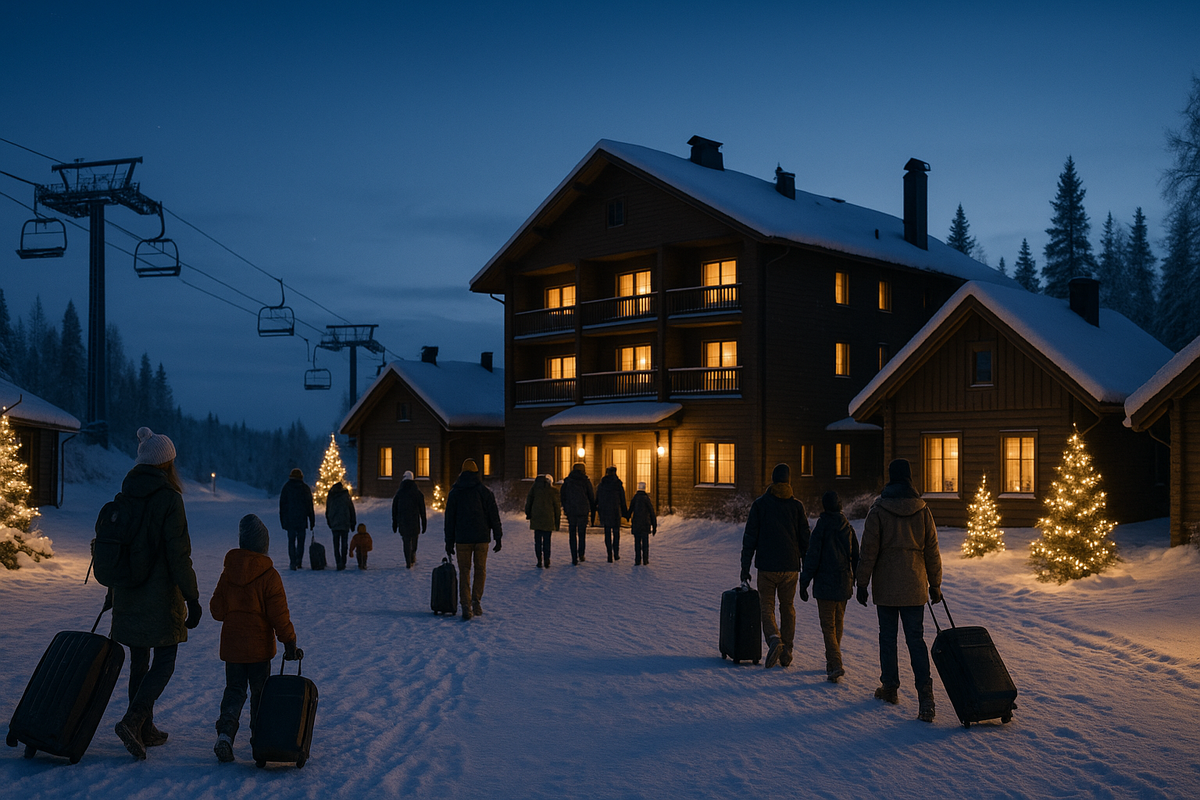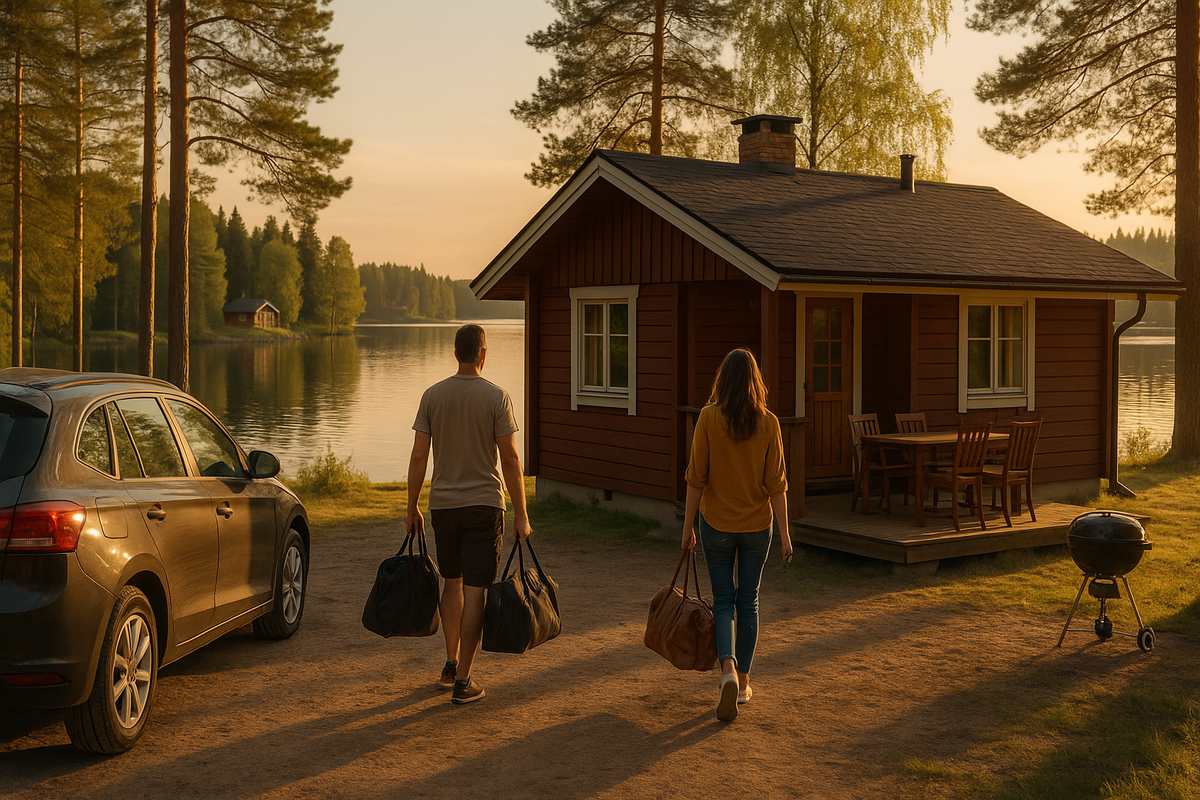💸 Seasonal prices in Finland: when is it more expensive, when is it cheaper
We've already figured out the weather a bit: there's a general guide to the seasons in Finland, and there are separate stories about summer, Lapland, and the lake district. Now the logical question is: "How does all this affect prices? When do tickets, hotels, and cottages skyrocket, and when, on the contrary, can you get a decent place for a reasonable price?"
Finland isn't cheap, but it does have its off-season: the period when everyone goes to Lapland; the autumn with ruska; and cities when Finns are busy with business rather than holidays. In this text, we'll break it down by season: where and when it's more expensive, where it's more affordable, and how to avoid the situation where "everything is great, but the budget is crying."
Where are the "high" and "low" seasons?
First, the big picture: Lapland, cities, lakes, the sea. Prices never depend solely on the weather, but the weather and holidays are the main factors.
It is already clear:
— Lapland is most expensive during snowy periods and around holidays;
— cities are most expensive in summer and during major events;
— Lakes and archipelagos become more expensive when the water is warm and people are on holiday.

Lapland: where there is money, there is snow and lights
If we think about Lapland by season, the pattern is simple: as soon as there is stable snow and Christmas lights appear, peak prices follow.
The most expensive period is
● December (Christmas, New Year);
● February–March (school holidays, perfect snow, lots of light).
Prices rise across the board: flights, accommodation, excursions, equipment rental. If you want both Lapland and savings, look at:
● late November/early December — not everything is in full Christmas mode yet, but there may already be snow;
● the second half of March/early April — sun, snow, slightly lower demand;
● September — ruska and the start of the Northern Lights season without winter prices.
Important: even during the "cheap" periods, Lapland is not a budget destination, but the difference between New Year's Eve and the end of March can sometimes feel like two different worlds.
Cities: when Helsinki and friends become more accessible
Cities (Helsinki, Tampere, Turku, etc.) are becoming more affordable. They live in rhythm:
● summer — more expensive: tourists, holidays, festivals, white nights;
● late autumn and winter — cheaper, except for large conferences and Christmas weeks;
● May and September — the golden mean: pleasant weather, reasonable prices.
If you enjoy city walks, museums and cafés, and perfect beach weather is not critical, cities in November or late winter can be a pleasant surprise: fewer people, lower prices, the same architecture and culture.

Lakes, cottages and archipelagos: summer, ruska and the "magic of midweek"
A cottage by the water is a dream, but in July it is logically more expensive. The logic is simple:
● mid-June to August is the peak season;
● late May, early June, early September — reasonable prices + still decent weather;
● autumn ruska (September) — prices may rise slightly in popular areas, but not to summer levels.
And here's a life hack:
Cottage booking tips
- Look for mid-week stays instead of Fri–Sun
- Check shoulder months: early June and early September Consider slightly less famous lakes or islands
- Watch for minimum stay rules (often 3–7 nights)
Many owners and services have cottages booked up on weekends, while midweek stays are left empty. If you can move your dates, this is a significant saving without compromising on quality.
Weather vs budget: what compromises work
This is where pictures from articles about summer in Finland and "Finnish winter" are particularly helpful: you already understand where the light is, where the water is warm, and now you add the price layer.
To simplify, there are three basic strategies:
- "I want the perfect picture, I'm willing to pay for it"
— Lapland at New Year, Lapland in February–March, July on the lakes and archipelagos. - "I want a balance between weather and price"
— March in Lapland after the peak dates, September with ruska, early June and early September by the water, cities in May and September. - "Maximum savings, with an eye on the weather"
— cities in late autumn and winter (excluding Christmas weeks), Lapland in late April or November (understanding the risks of snow), cottages outside the peak summer season.
You can also approach it from the opposite direction: choose a period when you feel comfortable with the weather (for example, you are not afraid of "autumn +8 °C and rain" or "March −5 °C"), and then look for price gaps for that period.

How to plan for your budget: traveller profiles
For clarity, here is a small matrix: who you are and which months most often "hit the mark" in terms of money and feelings.
Of course, this is not a strict rule, but it is a good starting point if you are overwhelmed by the options.
Booking: how many months in advance and what to do with fares
The most common question: "When should I click 'buy'?"
Very roughly:
● Lapland during peak season (New Year, February–March) — often 6–9 months in advance, especially for popular resorts and family cottages.
● Lapland in the shoulder seasons and autumn — 3–6 months is usually enough.
● Summer by the lakes and archipelagos — the earlier you know your dates, the better; 3–6 months gives you a good choice.
● Cities outside peak seasons — sometimes you can book 1–3 months in advance, or even closer to the date if you keep an eye out for special offers.
At the same time, insurance against bad weather is:
Booking safety net
- Choose at least partially refundable accommodation for key nights
- On risky legs (storms, deep winter), consider flexible tickets
- Watch weather alerts close to departure and adjust if needed
- Do not chain everything in one day with zero buffer
Here it is useful to familiarise yourself with the article on FMI forecasts and warnings: the better you read the maps and warning levels, the more relaxed you will be about the idea of "moving the day" or changing direction.
A little human touch at the end
Prices, seasons, buffers, tariffs... At some point, you just want to close everything and say, "Okay, I'll go when I can." And that's okay, by the way. Finland's got something to offer almost every month: somewhere it's perfect weather, somewhere it's good value for money, somewhere it's a compromise between the weather and budget.
If you want to be mindful, try to answer three questions honestly:
- What is more important to you: the weather, your budget, or specific dates?
- How prepared are you for "real" weather and less than ideal scenarios?
- Where do you want to save more: on accommodation, transport or activities?
Write in the comments which months you have already tried and how it felt:
"Lapland in February is expensive, but we have never regretted it."
"Helsinki in November is budget-friendly and cosy if you like rain and coffee."
"Summer cottages on weekdays — the perfect combination of price and tranquillity."
Your experience is the best guide for those who open this article with the question "is it affordable at all?" and are just browsing through the photos for now.
FAQ
Most often — in late autumn and winter in cities (except for Christmas weeks), as well as in the shoulder seasons: late April–May and November. At this time, there are fewer tourists, lower demand for hotels, cottages and some activities.
The classic peak is the Christmas and New Year period, as well as February–March in Lapland due to snow, holidays and the popularity of winter activities. In coastal regions and on lakes, prices peak in mid-summer.
If you don't mind rain, cool weather and shorter days, the low season gives you the opportunity to see Finland without the crowds and at lower prices. It's important to be honest with yourself that you're not going for the "perfect picture", but for the atmosphere and a more relaxed pace.
For New Year's and February trips, it's best to book 6-9 months in advance: there will be more accommodation and tours available at "reasonable" prices. For March, November or September, 3-6 months is usually enough, but popular cottages may still sell out earlier.
At peak times, yes, but there are nuances: midweek is cheaper than weekends; less popular lakes offer attractive prices; early June and early September often offer a good balance between weather and cost.
Trains and flights in Finland are not super cheap, but buying tickets in advance, special offers, night trains and flexibility with dates can help you save significantly. Sometimes it is cheaper to combine train and bus travel than to fly everywhere.
If you see a price that fits your budget and applies to a popular period (summer, Lapland, holidays), it is often better to buy. For the low season and weekdays in cities, you can afford to wait and monitor the dynamics.
Yes, but only in certain cases. It makes sense to buy flexible tickets for sections with a high risk of disruption (stormy ferries, deep winter in Lapland, "hub" flights before expensive connections). For other sections, you can get by with standard fares and small time buffers.





0 comments
Log in to leave a comment